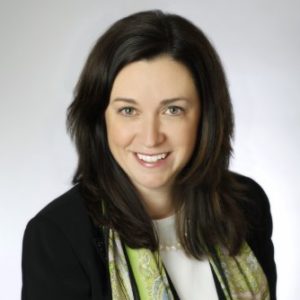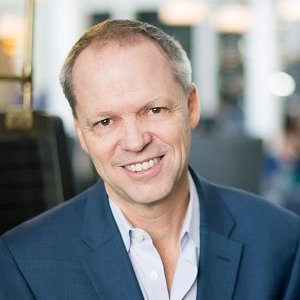
Whenever I meet entrepreneurs, they often pick my brain for marketing wisdom usually asking one or all of the following questions:
- How do we get the biggest bang for our marketing bucks?
- What are the most effective marketing channels?
- Is social media worth the time and effort?
- Does guerrilla marketing still work?
- Tell me Obi Wan, what is the secret to marketing success?
Avoiding questions 1-4 until I have a better sense of their overall go-to-market strategy, I jump all over #5. “The secret,” I say, “can be found in one word–focus.” Somewhat rattled by the simplicity of this seemingly obvious counsel, I wait for the notion to sink in and then offer real world stories of how businesses, large and small, have achieved success through laser-like focus on their product/service offering and target audience.
These stories are not always easy to come by which is why I’m so excited to share with you an interview I had with Diane Scott, Global Chief Product & Marketing Officer at Western Union. In her responses, you will discover how a deliberate focus on one charitable activity (Education for Better) has helped Western Union impact more than 1 millions lives around the world and gain 75% employee participation. It’s an impressive approach that not surprisingly garnered Scott and Western Union a Social Responsibility Award from The CMO Club. Prepare to see for yourself the power of focus in action.
Drew: Congratulations on winning the Social Responsibility Award. How do you define Corporate Social Responsibility?
Western Union defines itself as a purpose-driven company. Our business drives social and economic growth by promoting financial inclusion. In 2014, WU moved $185B, more than the GDP of 147 countries. Cross-border remittances provided needed funds for education, housing, health care and more. WU also provides better ways to move money for NGOs, universities and SMEs, which are an economic engine.
At Western Union, we use the term “corporate responsibility,” since responsible companies engage in far more than socially-oriented programs. For us, the term “corporate responsibility” typically refers to a fairly specific focus on responsibility in our core operations – e.g. how we treat our employees and promote diversity, how we focus on governance issues, how we prioritize ethics and compliance in our operations, and more.
Yet I think your question is getting at something broader than responsible operations alone. At Western Union we also seek to coordinate our corporate resources for both business and social impact, and engage our business, consumers and employees in this work. We seek to marshal all our assets – e.g. products and services, cause-related marketing, executive leadership, employee volunteerism, philanthropy and our core operations – for both business and social impact.
For the last three years our focus has been on supporting education through a program we call Education for Better. In fact, Western Union just publicly renewed our company-wide commitment to education through 2020. As a company whose mission is to help create global economic opportunity and growth for individuals, businesses, communities and economies, education is a natural focus for our citizenship efforts.
Drew: Can you provide a short recap of your CSR initiatives in 2015?
Two achievements that stand out are:
- The Western Union Foundation surpassed a major milestone, since it’s inception, donating more than US$100 million in support to more than 2,700 non-governmental organizations (NGOs) to provide support to thousands of families and individuals in more than 135 countries and territories.
- We also marked the three-year milestone with our Education for Better program, and renewed that commitment to help meet global education goals over the next three years. That programs has focused on secondary and vocational education for marginalized populations, including girls/women and migrants/refugees.
Drew: How do you measure the success of these programs? (Please provide specific results if you can.)
Each corporate initiative has its own metrics for success, and of course the Western Union Foundation has its own metrics to measure the success of its philanthropy. Yet generally we’re looking to measure both social and business impact through our social responsibility work.
To give you an example, we’ve measured the following with Education for Better:
- Social Impact
- Moved more than $7 billion in principal for education (WUBS), exceeding our original target of $1 billion.
- Provided more than $11.6 million in philanthropic funding to support educational programs in 53 countries, impacting more than 1.1 million students, teachers, and administrators.
- Through the UEFA PASS program, enabled more than one million days of school for disadvantaged students through UNICEF.
- Provided more than 11,000 hours of employee volunteer support to education.
- Business Impact
- Our education products saw double-digit revenue growth in 2014.
- Education-related cause promotions help assist our growth initiatives. A Mother’s Day promotion between the U.S. and Mexico, promotions in India and China, and a Ramadan promotion in Germany all contribute to our growth. Consumer engagement online soared over 100%_
- Nearly 75% of Western Union employees have participated in the cause, either through the employee giving campaign or volunteerism, building employee pride and increasing understanding of our cause.
- We engaged 72 WU agents, deepening our business relationships.
Drew: Building a business case for CSR initiatives can be tricky. What were the keys to gaining management support?
The second key insight was that while Our World, Our Family had been effective, it was largely philanthropic and had not benefited from the full resources of the company. The next strategic initiative would be imagined differently to leverage not just our funds and volunteer hours, but the whole of our business, including marketing and products.
Drew: When it comes to sharing your company’s CSR initiatives is there a fine line between letting the world know about it and overplaying the contribution? Where do you sit on this spectrum from letting the good action speak for itself and broadcasting it from the treetops?
I think one of the first questions is whether the work itself is authentic. Is it just writing a check, or does it tie to the company’s values, operations and brand identity? For WU, our community commitment goes back to the 1800’s, and today is stronger than ever. In some ways, I think that gives us “permission” to communicate about corporate responsibility.
Over the years, studies by Cone, Inc., Nielsen, Edelman and others have consistently shown that up to 91% of global consumers are likely to switch brands to one that supports a good cause, given similar price and quality, and 57% would purchase a product of lesser quality or efficacy if it was more socially or environmentally responsible.
That suggests it’s important for consumers understand our responsibility commitment. It’s probably not possible for companies ever do enough to tell consumers not about what they do, but also why they do what they do. That’s particularly true for WU, since I think our commitment to “moving money for better” is a meaningful brand differentiator. That said, it takes a lot to raise awareness – let alone build deep brand association. That’s another reason why we focus on a single cause company-wide. That focus is critical to enabling us to both track and deepen our impact and speak loudly with one voice that can be heard.
Drew: Looking ahead, what is the single biggest challenge that you’d like to overcome?
Like most thinks in life, our biggest challenge is our biggest opportunity from a marketing perspective – for WU, we have more channels than ever before, and more data than ever before…
200 countries, 500k locations, 100k atms, kiosks, mobile apps, online presence, ability to send from and to accounts to mobile wallets or with cash, 130 currencies. A brand and technology platform built to drive simplicity, security and reliability of cross border money movement – for consumers and businesses alike.
Given the brand’s 160+ years young existence, many times people and businesses think they know this brand and really don’t. 2016 is all about continuing to onboard and innovate around more cross border customer use cases for consumers and businesses than ever before – whether to fuel cross border payments for a small business in Bangladesh, a large bank in London, an NGO in Lagos, a University in New York, an ExPat in Dubai or a recent migrant from Nigeria.


